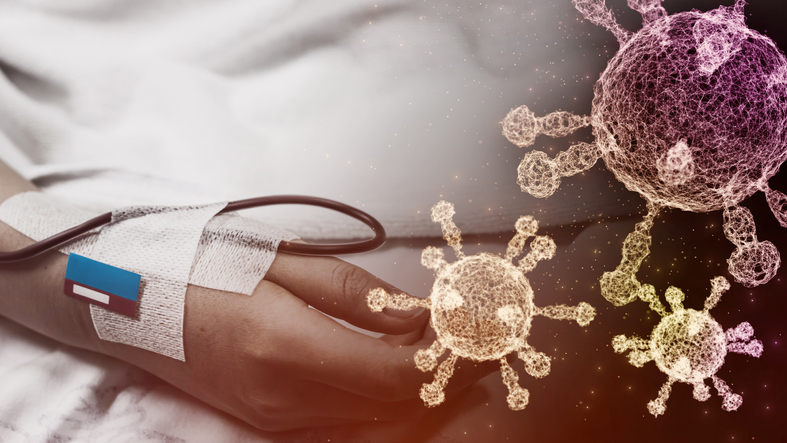HHV-6 was the most common herpesvirus found when tested in nasal swabs, but EBV was the most common in plasma.
Many studies have found evidence of reactivated herpesviruses in people with COVID-19. Investigators from Iran conducted a systematic review and meta-analysis of 32 interventional and large observational studies involving an unspecified total number of people, to estimate the frequency of herpesvirus reactivation.
The studies were largely of hospitalized and severely ill COVID-19 patients. Reactivation of herpesviruses was determined by various types of PCR technologies applied to different body fluids and tissues. Of the 32 studies, only 6 tested for HHV-6, and only three tested for HHV-6 consistently. Two of these studies tested nasal swabs and found HHV-6 in 47% of hospitalized patients and 21.7% in hospitalized COVID-19 patients respectively. A US study testing plasma samples from hospitalized patients found EBV in 22.4% and HHV-6 in 4.5%. The data for these three studies are summarized in the table below:
|
Study |
Patient type |
# |
Specimen |
Results |
|
Brooks 2022 |
hospitalized |
60 |
plasma |
EBV 22.4%, HHV-6 4.5% |
|
Carneiro 2022 |
ICU |
53 |
nasal swab |
HHV-6 47.2%, EBV 28.3% |
|
Lina 2022 |
hospitalized |
60 |
nasal swab |
HHV-6 21.7% |
The authors of the meta-analysis reported the frequency of herpesvirus reactivation, on average, to be: EBV 45%, HHV-7 44%, HSV 38%, CMV 19%, HHV-8 19% and HHV-6 18%. Most of the studies were from Europe; 2 were from the US, 4 from Asia, 1 from India, 2 from Brazil and 1 from South Africa. Samples were a mix of blood, bronchial aspirates, whole blood, plasma, nasal swabs and oral lesions.
An important limitation of the analysis is that the results were not adjusted for gender, underlying comorbid medical conditions, or treatments for COVID-19—including the use of corticosteroids—that could affect reactivation of herpesviruses.
While the best methodologies for pooling the results of multiple studies were employed by the authors, it is nevertheless true that different techniques for detecting viral reactivation—with different and unspecified sensitivities and specificities—were used, and different body fluids and tissues were sampled. Given this, it is not surprising that the frequency of reactivation was quite different from one study to the next.
Finally, none of the studies involved controlled treatments designed to suppress the reactivation of herpesviruses. Thus, it is not possible to draw inferences as to whether the reactivation of herpesviruses affects the clinical course of both acute COVID-19 and post-COVID sequelae such as Long COVID—although it is plausible that it might.
Read the full article: Shafiee 2023

